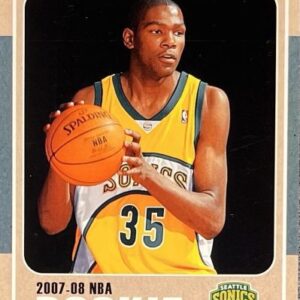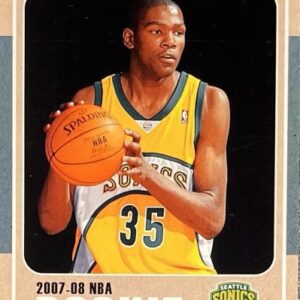In a world where fleeting moments of fame can lead even the most celebrated figures to fade into obscurity, Joe Montana’s legacy remains as enduring as a perfectly executed two-minute drill. It’s been over 25 years since “Joe Cool” last graced a football field in competition, yet the name Joe Montana continues to echo through both the halls of football lore and the fervent corridors of the sports trading card market. His 1981 Topps rookie card, a relic that embodies an era of change and triumph for the NFL, has become an increasingly rare and coveted artifact, a beacon for collectors and investors alike.
Montana, who is often celebrated for his poise under pressure and his clutch performances in the most critical moments, defined the San Francisco 49ers’ golden era of the 1980s. As he led them to no fewer than four Super Bowl victories, his legend transcended the sport, propelling him into the domain of cultural iconography. In the uniform that became synonymous with football excellence—a red-and-gold jersey—Montana was captured in his rookie card, frozen forever in that singular moment of athletic artistry. It is this image that has captivated collectors for decades.
The enchanting allure of the Montana rookie card lies not only in its visual and historical significance but also in its scarcity, particularly in pristine condition. Of the multitude that were originally printed, a mere 115 copies have achieved the coveted PSA 10 grade, a distinction that certifies the card as a “gem mint” specimen. This pinnacle of condition has driven collectors into a fervor, with no fewer than four of these elusive cards exchanging hands in just the past three months. Such transactions have seen values soar by nearly 17%, with the most recent gem mint example being sold for an eye-watering $48,800. This is a far cry from the $4,075 price tag that a comparable card fetched back in 2005, representing an astronomical 1,097% increase over the past 20 years.
The next tier down, the PSA 9 grade, depicts a scene mirroring this feverish demand, albeit with slightly more availability. With over 2,100 examples rated at this level, the cards retain an aura of exclusivity. The most recent PSA 9 sale clocked in at $2,035, reflecting a robust 11% increase in just the past three months alone. To contextualize this growth, a PSA 9 card would have set buyers back a modest $300 in 2010, documenting a staggering 578% surge in value over 15 years.
Even as one descends down the grading scale to PSA 8, which boasts nearly 10,000 identified examples, the demand remains unwavering. Recent sales have fluctuated between $290 and $431, with a notable sale at $329. However, unlike their loftier brethren, PSA 8 examples have experienced a modest 5% dip over the past quarter—yet they remain a fixture in the portfolios of many dedicated collectors.
Despite the somewhat high population numbers of the lower grades, the magnetic pull of Montana’s image and the enduring power of his football accomplishments continue to drive interest in his rookie card. While experienced collectors cherish the card’s multifaceted history, new fans are drawn into the market by the timeless gravitas of Montana’s story. The card’s importance as a piece of football’s past ensures that it anchors both nostalgia and investment strategies for those deeply entrenched in the hobby.
In sum, the 1981 Topps Joe Montana rookie card stands as an ineffable testament to not just the man himself, but to a sport that has evolved dramatically since his era. It encapsulates a time when a young quarterback’s ascent mirrored the rise of the NFL itself as a burgeoning cultural monolith. And as long as there are football fans to reminisce about those halcyon days, there will exist an unabated desire for this jewel of sports memorabilia. As we look toward the future, collectors will remain ever vigilant, on the hunt for this defining piece of football history that captures not just the essence of a player, but the heart of a bygone era.






